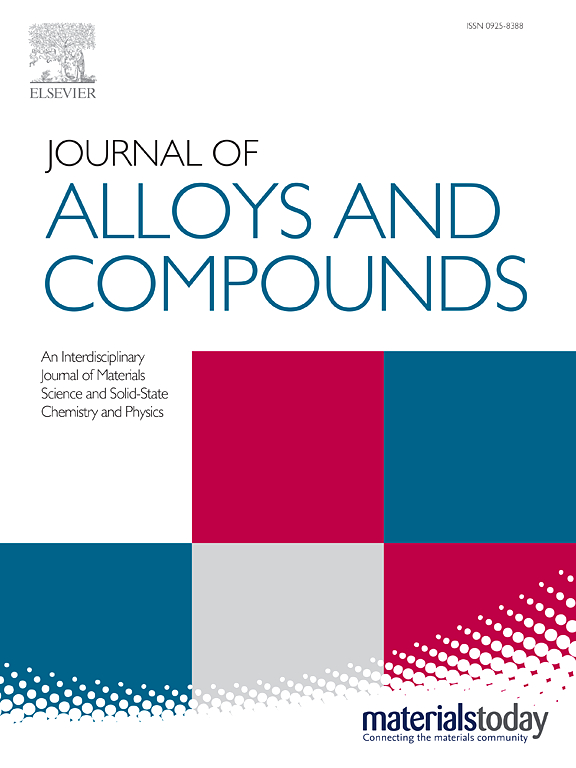Microstructure and nanoindentation creep behavior of NiAlCrFeMo high-entropy alloy
IF 5.8
2区 材料科学
Q2 CHEMISTRY, PHYSICAL
引用次数: 0
Abstract
This study provides a systematic investigation of the microstructure, mechanical properties, and creep behavior of NiAlCrFeMo high-entropy alloys (HEAs) in both as-cast and rotary swaging (RS) conditions. The phase structure, composition, and distribution of the alloys in both states were characterized using various microstructural characterization techniques. Both as-cast and RS samples consist of γ/γ' phases and B2 phases, although the RS samples contain small amounts of nano-sized α-Cr precipitates. The hardness, elastic modulus, and yield strength of the two HEA states were evaluated using continuous stiffness measurement (CSM) techniques and room-temperature compression tests, with maximum hardness and yield strength values of approximately 4.93 GPa and 719 MPa, respectively. Nanoindentation creep experiments were conducted to study the creep behavior under different strain rates. The results indicate that the creep strain rate sensitivity and activation volume of the as-cast samples are dependent on the loading strain rate (), while the RS treatment effectively suppresses this phenomenon. In comparison with conventional alloys, the NiAlCrFeMo HEA exhibits lower strain rate sensitivity, suggesting excellent creep resistance. This performance can be primarily attributed to the interaction between the alloy's geometrically necessary dislocation (GND) density and the precipitate phase.求助全文
约1分钟内获得全文
求助全文
来源期刊

Journal of Alloys and Compounds
工程技术-材料科学:综合
CiteScore
11.10
自引率
14.50%
发文量
5146
审稿时长
67 days
期刊介绍:
The Journal of Alloys and Compounds is intended to serve as an international medium for the publication of work on solid materials comprising compounds as well as alloys. Its great strength lies in the diversity of discipline which it encompasses, drawing together results from materials science, solid-state chemistry and physics.
 求助内容:
求助内容: 应助结果提醒方式:
应助结果提醒方式:


